You can read more about this year in film here. The Best Picture race is discussed here, with reviews of all the nominees. First there are the categories, followed by all the films with their nominations, then the Globes, where I split the major awards by Drama and Comedy, followed by a few lists at the very end. If there’s a film you expected to see and didn’t, check the very bottom – it might be eligible in a different year. Films in red won the Oscar in that category. Films in blue were nominated. But remember, there’s still only nine categories at this point.
Nighthawk Awards:
- Best Picture
- M
- King Kong
- I Am a Fugitive from a Chain Gang
- Duck Soup
- The Invisible Man
Analysis: In the previous year only two of my top 5 earned any Oscar nominations. Here it’s one. This time we still have a Marx Brothers but also two Horror films and of course a Foreign Film. And none of my next six earned any Oscar nominations either (Design for Living, Dinner at Eight, Footlight Parade, The Blood of a Poet, The Mummy, Hard to Handle). In fact, of all 18 films that make the consideration for this category by being ***.5 or ****, five of them were nominated for Best Picture (State Fair, The Private Life of Henry VIII, Lady for a Day and Little Women are the others) and the other 13 (which included the not yet mentioned Picture Snatcher, Marius and Trouble in Paradise) received a combined zero Oscar nominations.
- Best Director
- Fritz Lang (M)
- Mervyn LeRoy (I Am a Fugitive from a Chain Gang)
- Ernest B. Schoedsack / Merian C. Cooper (King Kong)
- James Whale (The Invisible Man)
- Ernst Lubitsch (Design for Living)
Analysis: Just remember that Fritz Lang and James Whale were never nominated for an Oscar and in fact both appeared on this list because of it. Lubitsch makes it in because of the weaker directing in Duck Soup. The actual Oscar nominees were Frank Capra (11th place), George Cukor (13th place, though he comes in 7th for Dinner at Eight) and winner Frank Lloyd (not worthy of consideration).
- I Am a Fugitive from a Chain Gang
- The Invisible Man
- Design for Living
- Dinner at Eight
- Little Women
- Best Original Screenplay:
- M
- Duck Soup
- The Private Life of Henry VIII
- King Kong
- Hard to Handle
Analysis: The actual Oscar nominees were One Way Passage (8th place here), Rasputin and the Empress (not worth noting) and The Prizefighter and the Lady (yet another over-rated Frances Marion script). M has such a great script that it wins over one of the funniest films ever made.
- Best Actor:
- Peter Lorre (M)
- Paul Muni (I Am a Fugitive from a Chain Gang)
- Charles Laughton (The Private Life of Henry VIII)
- Claude Rains (The Invisible Man)
- Leslie Howard (Berkeley Square)
Analysis: For the second year Muni comes in second and it’s hard because he’s brilliant. But Lorre’s performance is a revelation. I thought of putting Lorre in Supporting, as some people do, but, even though he’s not seen much early on, he so dominates the film once he’s actually shown, that there’s no question that this is the lead performance. And Rains performance is especially impressive as he doesn’t get to show his face until the final shot of the final film, but oh that voice.
- Best Actress
- Katharine Hepburn (Morning Glory)
- May Robson (Lady for a Day)
- Miriam Hopkins (Design for Living)
- Katharine Hepburn (Little Women)
- Janet Gaynor (State Fair)
- Ann Dvorak (Three on a Match)
Analysis: Dvorak makes the list because of the two appearances by Hepburn. In spite of her two nominations it will be a while before Hepburn manages to move to the top of the all-time list. In the mid-30’s, it will actually be Bette Davis who takes command, with Hepburn catching up in the 1950’s.
- John Barrymore (Dinner at Eight)
- Ralph Bellamy (Picture Snatcher)
- Charles Laughton (Island of Lost Souls)
- Edward Everett Horton (Design for Living)
- Humphrey Bogart (Three on a Match)
Analysis: There is a considerable distance between the #1 and #2 spots. In fact, the #2 performance is closer to the #9 performance than it is to #2. Barrymore gives the first great alcoholic performance in a talkie. As for the rest of the list – well, Bellamy is a revelation in a dramatic role, Laughton is good and creepy, Horton is Horton and Bogart gets a small but plumb role as a lowlife.
- Elsa Lanchester (The Private Life of Henry VIII)
- Marie Dressler (Dinner at Eight)
- Glenda Farrell (I Am a Fugitive from a Chain Gang)
- Ruth Donnelly (Hard to Handle)
- Billie Burke (Dinner at Eight)
Analysis: Lanchester is so great in her small role as Anne of Cleves that she manages the win over Dressler and one of the great reaction shots of all-time (which I shouldn’t harp on since her whole performance is very good and nuanced). Donnelly is fantastic as the money-grabbing mother of Cagney’s love in Hard to Handle. For the second year in a row, Billie Burke comes in 5th place.
- Best Editing:
- M
- King Kong
- The Invisible Man
- I Am a Fugitive from a Chain Gang
- The Blood of a Poet
- Best Cinematography:
- M
- I Am a Fugitive from a Chain Gang
- The Invisible Man
- King Kong
- The Story of Temple Drake
Analysis: A Farewell to Arms, which won the Oscar, is sitting way down in 9th place, behind Footlight Parade, The Blood of a Poet and Island of Lost Souls. And yet, it was still a better choice than the other Oscar nominees (Reunion in Vienna and A Sign of the Cross) which I didn’t even deem worthy of consideration for my list. These are the third nominations for Arthur Edeson (Invisible Man) and Karl Struss (Story of Temple Drake). But, while Struss has one win (Sunrise), he is just about done with getting Nighthawk nominations. Edeson, on the other hand, already has two wins (All Quiet, Frankenstein) and will continue to get nominations for years to come. And Fugitive is the first nomination for Sol Polito, who will also show up a lot through the rest of the decade.
- Best Original Score:
- King Kong
- The Invisible Man
- Picture Snatcher
- Marius
- Little Women
Analysis: Is there anyone who would dare pick anything other than King Kong here? That’s the first win for Max Steiner (and Little Women adds another nomination), the composer who will soon dominate the list in the pre-John Williams era.
- Best Sound:
- King Kong
- I Am a Fugitive from a Chain Gang
- Footlight Parade
- The Invisible Man
- A Farewell to Arms
Analysis: They go back to rewarding a specific film and they go with A Farewell to Arms, which at least earns a nomination from me.
- M
- Footlight Parade
- The Private Life of Henry VIII
- Berkeley Square
- Island of Lost Souls
Analysis: I love the naturalistic locations in M, especially the discovery scene in the storage units and the trial scene. They earn the win over the wonderful sets on Footlight Parade or the period sets for Henry and Berkeley.
- King Kong
- The Invisible Man
- Frisco Jenny
Analysis: The effects on King Kong still look great after all this time. Some of the effects in The Invisible Man aren’t great, but the unmasking and the disembodied pants running down the road are still great. Frisco Jenny makes it here and in the next category because of what it manages to do with the 1906 San Francisco Earthquake.
- Best Sound Editing:
- King Kong
- Frisco Jenny
- Best Costume Design:
- The Private Life of Henry VIII
- Berkeley Square
- Footlight Parade
- Little Women
- The Mummy
- Best Makeup
- Island of Lost Souls
- The Mummy
Analysis: This time Wally Westmore, the great makeup artists from Paramount who came in second the year before for his makeup on Jekyll wins the award.
- Best Original Song:
- “The Gold Diggers’ Song (We’re in the Money)” (Gold Diggers of 1933)
- “These are the Laws of My Administration” (Duck Soup)
- “The Country’s Going to War” (Duck Soup)
- “Hail Freedonia” (Duck Soup)
- “Shanghai Lil“ (Footlight Parade)
Analysis: This is going to be very tricky in the years before the creation of the Best Song category at the Academy Awards in 1934. I was yelled at for dismissing nearly all pre-1934 songs other than Marx Bros songs in my Best Original Song post for my History of the Academy Awards series. But it’s hard figuring out precisely which songs were written for these films. This gets much easier (though not perfectly clear) starting in 1954, when you can go to the Academy list for Song Title from all the films released in each year (not perfectly clear because some of them I’m fairly certain are wrong, but we’ll get to those in individual years). In this year, we have a clear winner, a classic that rises up above even while the film itself is utterly forgettable. The songs from Duck Soup highlights the fact that Duck Soup, while the best of the Marx Brothers films, has the weakest songs of the early films; not one of these songs is anywhere as good as the two songs from Horse Feathers (not to mention that they’re all really short – “Shanghai Lil” might be longer than all three of them put together). And the songs from Footlight Parade aren’t the best aspect and this, to me, is the best of the bunch.
- Boudu Saved From Drowning
- The Testament of Dr. Mabuse
- Fanny
- Zero for Conduct
Analysis: Though the full list of eligible films for this award finally expand, including 1 from China and 5 from Japan, the only ones that reach my cut-off point of ***.5 or higher are still just German (#2) or French (the other three). It’s Renoir’s first nomination (and win) in this category but the third nomination for Fritz Lang who won this in the pre-Oscar years and in 1930-31. Fanny is nominated, like Marius, the first film in the trilogy, was the year before, but they are by different directors (and the third, Cesar, will be directed by Pagnol himself).
By Film:
note: They’re in points order. You get twice as many points for a win as for a nomination. Hopefully your math skills will let you figure out the system.
- M (520)
- Picture, Director, Adapted Screenplay, Actor, Editing, Cinematography, Art Direction, Foreign Film
- King Kong (355)
- Picture, Director, Original Screenplay, Editing, Cinematography, Original Score, Sound, Visual Effects, Sound Editing
- I Am a Fugitive from a Chain Gang (310)
- Picture, Director, Adapted Screenplay, Actor, Supporting Actress, Editing, Cinematography, Original Score, Sound
- The Invisible Man (285)
- Picture, Director, Adapted Screenplay, Actor, Editing, Cinematography, Original Score, Sound, Visual Effects
- The Private Life of Henry VIII (185)
- Original Screenplay, Actor, Supporting Actress, Art Direction, Costume Design
- Dinner at Eight (160)
- Adapted Screenplay, Supporting Actor, Supporting Actress, Supporting Actress
- Design for Living (150)
- Director, Adapted Screenplay, Actress, Supporting Actor
- Duck Soup (120)
- Picture, Original Screenplay, Original Song, Original Song, Original Song
- Little Women (115)
- Adapted Screenplay, Actress, Original Score, Costume Design
- Island of Lost Souls (70)
- Supporting Actor, Original Score, Art Direction, Makeup
- Hard to Handle (70)
- Original Screenplay, Supporting Actress
- Berkeley Square (70)
- Actor, Art Direction, Costume Design
- Morning Glory (70)
- Actress
- Three on a Match (65)
- Actress, Supporting Actor
- Footlight Parade (65)
- Sound, Art Direction, Costume Design, Original Song
- Picture Snatcher (55)
- Supporting Actor, Original Score
- The Blood of a Poet (45)
- Editing, Foreign Film
- Marius (45)
- Original Score, Foreign Film
- Frisco Jenny (40)
- Visual Effects, Sound Editing
- Lady for a Day (35)
- Costume Design
- State Fair (35)
- Actress
- The Story of Temple Drake (25)
- Cinematography
- The Mummy (25)
- Costume Design, Makeup
- A Farewell to Arms (20)
- Sound
- Gold Diggers of 1933 (20)
- Original Song
Film That is Better than the Awards Make It Look:
- Footlight Parade
Analysis: As can be seen, Footlight Parade earns 4 nominations, all in technical categories. And, as is listed below, it also comes in 6th place three times, two of them in major categories (Actor, Supporting Actress; the third is Cinematography). But it also comes in 7th place once (Original Screenplay), 8th place three times (Picture, Supporting Actor, Editing) and in 9th place once (Director). In fact, it earns nominations in all 7 categories for the Comedy Awards. Overall, this means that while it only earns 4 nominations, it has 12 top 10 finishes, which is more than any other film (The Invisible Man, which earned 6th in Costume Design and 7th in Art Direction is the only other film with more than 9).
Best Film Not Nominated for Any Nighthawk Awards:
- Trouble in Paradise
Analysis: This is one of those films where I seem to lose my credibility as a serious lover of film and I’m not certain why. I think the film is very good, but at the lower end of ***.5. Maybe it’s just that I can’t get too into a film where someone would seriously fall in love with Kay Francis over Miriam Hopkins. Plus, I’m not a real big fan of Lubitsch.
Biggest Awards Film Not Nominated for Any Nighthawk Awards:
- Cavalcade
Analysis: As subtle as a horse’s kick to the head says one modified version of the poster.
Nighthawk Golden Globes:
Drama:
- Best Picture
- M
- King Kong
- I Am a Fugitive from a Chain Gang
- The Invisible Man
- The Blood of a Poet
- Best Director
- Fritz Lang (M)
- Mervyn LeRoy (I Am a Fugitive from a Chain Gang)
- Ernest B. Schoedsack / Merian C. Cooper (King Kong)
- James Whale (The Invisible Man)
- Jean Cocteau (The Blood of a Poet)
Analysis: For the second straight year the final slot earning a Drama nomination (but not a regular nomination) is for a French director.
- Best Adapted Screenplay:
- I Am a Fugitive from a Chain Gang
- The Invisible Man
- Little Women
- Marius
- Island of Lost Souls
- Best Original Screenplay:
- M
- The Private Life of Henry VIII
- King Kong
- The Mummy
- One Way Passage
Analysis: After a year in which there was only one nominee (rare for the Drama category), we have a full slate here, and one good enough that the actual Oscar winner is the #5 spot and doesn’t make the actual regular awards up above.
- Peter Lorre (M)
- Paul Muni (I Am a Fugitive from a Chain Gang)
- Charles Laughton (The Private Life of Henry VIII)
- Claude Rains (The Invisible Man)
- Leslie Howard (Berkeley Square)
Analysis: Because all of the Nighthawk nominees are in Drama films, we don’t add anyone here. And that’s not such a bad thing since the next five spots were all for Comedy films. So, the next Drama performance that is off the list here is James Cagney for Picture Snatcher, followed by William Powell for One Way Passage, and there is a considerable distance between those performances and the ones on this list.
- Katharine Hepburn (Morning Glory)
- Katharine Hepburn (Little Women)
- Janet Gaynor (State Fair)
- Ann Dvorak (Three on a Match)
- Orane Demazis (Marius)
Analysis: Dvorak is good and disturbing as the fallen woman in Three on a Match. Demazis will be quite good in all three of the films in the trilogy as Fanny – certainly much better than Leslie Caron would be in the remake, though, to be fair, no less strange looking.
- Best Supporting Actor:
- Ralph Bellamy (Picture Snatcher)
- Charles Laughton (Island of Lost Souls)
- Humphrey Bogart (Three on a Match)
- Otto Wenicke (M)
- Adolph Menjou (A Farewell to Arms)
- Best Supporting Actress:
- Elsa Lanchester (The Private Life of Henry VIII)
- Glenda Farrell (I Am a Fugitive from a Chain Gang)
- Joan Blondell (Three on a Match)
- Billie Burke (Christopher Strong)
Analysis: Because she was so consistently good at playing the wife, whether for pathos or for humor, Burke manages to make both the Drama and Comedy lists for Supporting Actress. It might seem strange to have Blondell on here and not Bette Davis, especially with a final empty slot, but Davis, in spite of the fact that she is about to start dominating the Nighthawk Awards, just isn’t that great in the Three on a Match and she seems superfluous – like they just needed a third actress to make the title work.
By Film:
- M (370)
- Picture, Director, Adapted Screenplay, Actor, Supporting Actor
- I Am a Fugitive from a Chain Gang (240)
- Picture, Director, Adapted Screenplay, Actor, Supporting Actress
- The Invisible Man (170)
- Picture, Director, Adapted Screenplay, Actor
- King Kong (135)
- Picture, Director, Original Screenplay
- The Private Life of Henry VIII (135)
- Original Screenplay, Actor, Supporting Actress
- The Blood of a Poet (95)
- Picture, Director
- Three on a Match (95)
- Actress, Supporting Actor, Supporting Actress
- Little Women (75)
- Adapted Screenplay, Actress
- Marius (75)
- Adapted Screenplay, Actress
- Island of Lost Souls (70)
- Adapted Screenplay, Supporting Actor
- Morning Glory (70)
- Actress
- Picture Snatcher (60)
- Supporting Actor
- The Mummy (40)
- Original Screenplay
- One Way Passage (40)
- Original Screenplay
- State Fair (35)
- Actress
- Berkeley Square (35)
- Actor
- A Farewell to Arms (30)
- Supporting Actor
- Christopher Strong (30)
- Supporting Actress
Best Drama Not Nominated for Any Nighthawk Golden Globes:
- The Story of Temple Drake
Analysis: A good film, but can’t rise above that. I’ve already written about it extensively.
Comedy / Musical:
- Best Picture:
- Duck Soup
- Design for Living
- Dinner at Eight
- Footlight Parade
- Hard to Handle
Analysis: After four years in a row where I couldn’t get past two films in this category we have a category so stacked that I had to cut Lady for a Day and Trouble in Paradise. Aside from four films that are pretty much classified as classics, I also have a truly under-rated, under-appreciated James Cagney film, one I hadn’t even seen a couple of months ago. Hard to Handle is breakneck fun with Cagney as a con man.
- Best Director:
- Ernst Lubitsch (Design for Living)
- George Cukor (Dinner at Eight)
- Mervyn LeRoy (Hard to Handle)
- Lloyd Bacon (Footlight Parade)
- Frank Capra (Lady for a Day)
Analysis: The irony here, of course, is that Capra thought he was going to win the Oscar and he only makes my Globe nominations because Duck Soup doesn’t have much in the way of direction.
- Best Adapted Screenplay:
- Design for Living
- Dinner at Eight
- Lady for a Day
- Trouble in Paradise
- Best Original Screenplay:
- Duck Soup
- Hard to Handle
- Footlight Parade
- James Cagney (Footlight Parade)
- Groucho Marx (Duck Soup)
- Fredric March (Design for Living)
- James Cagney (Hard to Handle)
- Lionel Barrymore (Dinner at Eight)
Analysis: Again, the year before had one nomination in this category. But here I have to cut Gary Cooper in Design for Living and Herbert Marshall in Trouble in Paradise.
- May Robson (Lady for a Day)
- Miriam Hopkins (Design for Living)
- Miriam Hopkins (Trouble in Paradise)
- Jean Harlow (Dinner at Eight)
- Joan Blondell (Footlight Parade)
Analysis: What’s nice here is the range of performances – from Robson’s ditzy old lady to Hopkins’ two seriously sexy performances to Harlow’s combination of those two things (“I was reading a book the other day”) and Blondell’s pure force of performance, with one of the best withering lines ever in a film and one that wouldn’t have passed muster a year later (“As long as they’ve got sidewalks you’ve got a job!”).
- Best Supporting Actor
- John Barrymore (Dinner at Eight)
- Edward Everett Horton (Design for Living)
- Ned Sparks (Lady for a Day)
- Frank McHugh (Footlight Parade)
Analysis: Is there ever a film with Ned Sparks in which he isn’t the most interesting character?
- Best Supporting Actress
- Marie Dressler (Dinner at Eight)
- Ruth Donnelly (Hard to Handle)
- Billie Burke (Dinner at Eight)
- Ruby Keeler (Footlight Parade)
By Film:
- Dinner at Eight (355)
- Picture, Director, Adapted Screenplay, Actor, Actress, Supporting Actor, Supporting Actress, Supporting Actress
- Design for Living (320)
- Picture, Director, Adapted Screenplay, Actor, Actress, Supporting Actor
- Footlight Parade (300)
- Picture, Director, Original Screenplay, Actor, Actress, Supporting Actor, Supporting Actress
- Duck Soup (215)
- Picture, Original Screenplay, Actor
- Hard to Handle (200)
- Picture, Director, Original Screenplay, Actor, Supporting Actress
- Lady for a Day (185)
- Director, Adapted Screenplay, Actress, Supporting Actor
- Trouble in Paradise (75)
- Adapted Screenplay, Actress
Best Comedy Not Nominated for any Nighthawk Golden Globes:
- I By Day, You By Night
Analysis: For the second year in a row this category is filled with a German language Musical. Amusingly, some of the plot of this film would be the idea pitched by Joe Gillis in Sunset Blvd.
Roundup for the Year in Film:
Eligible Films I Have Seen: 127
- Average Film Score for the Year, out of 100: 65.16
Oscar-Nominated Films I Have Not Seen:
- none
Oscar Quality:
Best Picture: This is a very slight improvement over 1931-32, raising from a 5.68 to a 5.21. But we’re still in the area of bad scores, the 7th worst year in Oscar history. It hurts a lot that there’s only one great film and that the #2 film (State Fair) just barely eeks its way into the top 300. And while this doesn’t actually affect the rank, the Academy didn’t do themselves any favors picking the 3rd worst film (out of 10) to give the award to.
The Winners: When I rank the winners of all the Oscar categories, I do a few things. One of the things I do is give an average based on where I have the winners ranked in each category, and then I do it again without Best Picture. That’s because I rank every film for Picture and when a really bad film wins (like Cimarron) it brings down the overall score quite a bit. With the first score, this year gets a 19.11, which is the worst in history (I have seen so many more films now from this year that Cavalcade dropped so low that it pushed this year to be worse than 1928-29, which was the worst when I wrote that post). With the other score this year gets a 9.13 which is better than the previous two years (because Cavalcade now ranks at #99 for the year). It’s still kept down by Cavalcade’s other two Oscars. Only once did the Academy pick my #1 choice (Actress), but in three other categories, they at least picked the best available nominee (Adaptation, Story, Cinematography), but that says more about the bad choices among the nominees than about any particular good choices in the winners.
Top 5 Films of the Year:
Easily the best film of the year – something Chaplin would do again five years later.
1 – M (see review here)
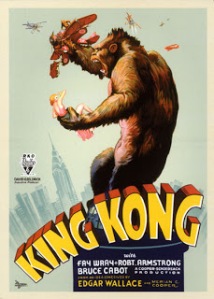 2 – King Kong (dir. Merian C. Cooper and Ernest B. Schoedsack)
2 – King Kong (dir. Merian C. Cooper and Ernest B. Schoedsack)
Oh, how good it all still looks. Not just the ape, though we can begin with the ape. Look at the glorious majesty of stop-motion animation and what it can do. It provides details that aren’t even intended. The simple movement of changing Kong from frame to frame would move the fur and so it would be like there is a constant breeze on the island. Or look at the fight between Kong and the T Rex. Look at how Kong keeps going, long after the Rex has fallen, finally snapping his jaw and watch the blood pour out. These scenes are so good because they were done with such tender care by people who knew what they were doing.
But it’s not just the effects crew that was making thing look great. Look at the jungle setting. Look at the magnificent wall, which was actually built on the studio lot. Look at the boat and how everything seems so real even when we know it can’t possibly be. All of it is just a world of horror and all of it looks so magnificently real. This isn’t a Universal Horror film which relied on atmosphere and directorial vision and good solid acting. The Universal films survive and thrive in spite of their effects. King Kong survives because of it.
But not just because of the effects. There is the magnificent score from Max Steiner, so well done that Howard Shore would deliberately echo it when doing his own 2005 score for the Peter Jackson film. There is the sense of pathos in Kong’s story, in the way he is pulled from his home when he just wants to be left alone with his woman (that sense is really what Jackson’s film would later capture, specifically in the performance of Naomi Watts, which is why that film is so good and the 1976 film is so bad, though to be fair to Jessica Lange, three years later when she would re-emerge in the film world, working with better directors, she would quickly become an Oscar-winning actress). There is the sense of wonder when Kong pulls the one poor woman out of her bedroom because she might be Ann and the wonderful sense of tragicomedy when he discovers he is wrong and simply drops the poor woman to her death.
Kong is a story of wonder, a story of horror, a story of magnificent scope and reach. It has the effects, but it also has the story, has the editing, the cinematography, the music, the total package that made it a box office hit in 1933, pulling RKO out of disaster, but also the sense of magic and beauty that still makes it a classic every bit as worth watching today as it was then.
3 – I Am a Fugitive from a Chain Gang (see review here)
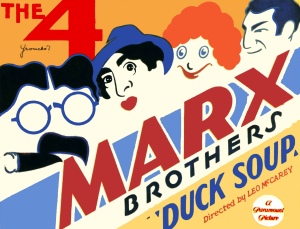 4 – Duck Soup (dir. Leo McCarey)
4 – Duck Soup (dir. Leo McCarey)
In 2000, the American Film Institute released their 100 Years…100 Laughs list, the 100 funniest American films. And that brings up an interesting point about themed lists. For instance, in a list of the best Harrison Ford films do you list The Mosquito Coast, which is a deeply flawed film but has one of his best performances? What is the most important part of your list? So, on their list, AFI topped off with Some Like It Hot – a good choice, though, personally, with Monty Python and the Holy Grail and A Fish Called Wanda being British films (though, of course, that didn’t stop the AFI from including Fish), I would have probably gone with Blazing Saddles. But they also listed The Graduate at #9. Now, The Graduate is a funny film, but is more a great film that is a comedy than a particularly funny film, especially when you look just after it on the list and see Airplane and The Producers. I mention all of this because Duck Soup was at #5 and that feels just about right to me. I’d probably, for American films, put it behind Blazing Saddles, Airplane, The Producers and Clerks.
Late in the film, beset by war on all sides, Groucho and his brothers head out to save Margaret Dumont, though why they would do this, of course, is beyond anyone. And Groucho leads with what be my favorite Groucho line: “We go forth to fight for this woman’s honor. Which is probably more than she ever did.”
But this film is far more than just one line or one song (all of the songs are funny, the funniest being “These are the Rules of My Administration”, but none of them are great songs, because they are so short and they focus more as one-liners than as songs). It is more than just one great scene (where Chico mimics all of Groucho’s movements to make believe that Groucho is staring into a mirror – possibly the best of all Marx Brothers scenes, especially since it is silent and doesn’t rely on a one-liner). It is more than just one great running gag (where Harpo, riding the bike, keeps leaving Groucho abandoned in the sidecar) which builds up to a perfect final use.
It is the way that all of these things work so brilliantly together. It is how the film, released not long enough after the end of World War I for it all to have faded and yet, looking forward prophetically to how absurd the future of international relations was going to become, is so consistently brilliant, how every moment works, how every gag works.
Now, I would argue that Some Like It Hot is Billy Wilder’s best comedy but I think One, Two, Three is funnier. I think Annie Hall is Woody Allen’s funniest film but Hannah and Her Sisters is his best. But with Duck Soup you get the best of the Marx Brothers – it is their best film and their funniest. This would be the last film with Zeppo and they would, after this film, leave Paramount and go to MGM. Their next film, A Night at the Opera, is a very good film, but not nearly as good (or as funny) as Duck Soup. And after that, things would go downhill. This is their peak and it’s the one they really deserve to be remembered for.
5 – The Invisible Man (see my review here)
5 Worst Films (#1 being the worst):
- The Vampire Bat
- Oliver Twist
- White Zombie
- She Done Him Wrong
- Meet the Baron
The Vampire Bat (dir. Frank R. Strayer)
If you look at reviews on the IMDb, you would think that this is a B version of the kind of things Universal was doing; a similar style of film but with the quality you would expect from a studio on Poverty Row. At Wikipedia there is the following sentence: “Part of the reason that The Vampire Bat looked almost as good as any Universal Pictures horror film is because Majestic leased James Whale’s castoffs, the beautiful “German Village” backlot sets left over from Frankenstein (1931) and the interior sets from his film The Old Dark House (1932), plus some location shooting at Bronson Caves.”
Don’t believe any of that. First of all, The Vampire Bat doesn’t look almost as good as a Universal film. It doesn’t look good at all. And it’s not a B version of a Universal horror film; it’s more of an F. Are the sets the same ones from Universal’s films? Well, yes, that much is true. But since this film was shot with horrendous lighting by a cinematographer who acts as if he’s never worked behind a camera before they aren’t able to do anything worthwhile with them. And to add to that it was edited with a series of bizarre half-wipes that comes in so oddly and with no good transitions that you begin to think that people simply were walking in front of the camera at various points. So, don’t go looking for the quality of one of James Whale’s Universal films – there isn’t anything even remotely approaching that.
And yet, the quality of the film, not even withstanding the fact that it was made by a small production company with very little budget, isn’t the worst thing about this film. The worst thing is the truly atrocious acting that starts in the first minute and goes throughout. Look at some of the talent involved in this film: Fay Wray (who would star in King Kong a few months later), Dwight Frye (who is fantastic in Dracula and Frankenstein) and Melvyn Douglas (I’m not a big fan, but still, someone who would soon become a star). And all of them are pretty bad. Well, Wray and Frye are forgettable and Douglas is quite bad. But who’s worse is the actual star of the film (yes, in spite of all those names, none of them are the star), Lionel Atwill. Atwill is so mind-bogglingly bad as the mad scientist who is behind everything that is going on (villagers are dying of blood loss and the doctor manages to get the town after the town simpleton, played by Frye, whose death scene and the aftermath are filmed so badly and are so illogical that you would have to see the film to believe it, but I seriously don’t recommend it) that you wonder what the hell any studio, even one on Poverty Row was doing casting him at all.
Looking at the film as a whole we can definitely throw some blame on the cinematographer, Ira H. Morgan, who worked on over 170 films, almost none of them memorable, and editor Otis Garrett, who somehow eventually moved on to directing. But when you have professional actors involved and they all manage to give performances that make them look like the rankest kind of amateurs, there is really one place to throw the blame, and that’s on the director. So I’m gonna say that Frank R. Stayer is the primary reason this film is so incredibly bad and recommend you skip and probably any other films he directed (which include a lot of low-budget Horror films and a bunch of Blondie films).
Points:
- Most Nighthawk Nominations: King Kong / The Invisible Man (9)
- Most Nighthawk Awards: M (8)
- Most Nighthawk Points: M (520)
- Worst Film Nominated for a Nighthawk Award: Morning Glory
- 2nd Place Award: I Am a Fugitive from a Chain Gang (Director, Actor, Cinematography, Sound)
- 6th Place Award: Footlight Parade (Actor, Supporting Actress, Cinematography)
- Most Nighthawk Drama Nominations: M (5)
- Most Nighthawk Drama Awards: Scarface (4)
- Most Nighthawk Drama Points: M (370)
- Worst Film Nominated for a Nighthawk Drama Award: Morning Glory
- Most Nighthawk Comedy Nominations: Dinner at Eight (8) *
- Most Nighthawk Comedy Awards: Duck Soup / Design for Living / Dinner at Eight (2)
- Most Nighthawk Comedy Points: Dinner at Eight (355)
- Worst Film Nominated for a Nighthawk Comedy Award: Trouble in Paradise
Note: * means a Nighthawk record up to this point; ** ties a Nighthawk record
Analysis: This makes it four years in a row that the worst film nominated for a Nighthawk Award is not only a film nominated for Best Actress, but the film that actually won Best Actress at the Oscars (though in the previous three cases it didn’t win the Nighthawk Award, whereas it does this time). The Globe Awards are interestingly split. In Drama, M takes 4 awards and the other 4 are split between 4 films. In Comedy, three films each take two and two other films take the final two. So, in both groups, 5 films win awards, but the distribution is much more different. As for Trouble in Paradise, I still have it as a ***.5 film; it’s just that no worse films ended up with nominations this time.
Progressive Leaders:
- Most Nighthawk Nominations: All Quiet on the Western Front (13)
- Most Nighthawk Awards: City Lights (9)
- Most Nighthawk Points: All Quiet on the Western Front (645)
- Most Nighthawk Awards without winning Best Picture: Frankenstein (6)
- Most Nighthawk Nominations without a Best Picture Nomination: Faust (8)
- Most Nighthawk Nominations without a Nighthawk Award: The Invisible Man (9)
- Actor: Lon Chaney (240)
- Actress: Janet Gaynor (245)
- Director: F.W. Murnau / Charlie Chaplin (180)
- Writer: Charlie Chaplin (200)
- Cinematographer: Arthur Edeson (125)
- Composer: Charlie Chaplin (175)
Breakdown by Genre (Foreign in parenthesis, best film in genre following, avg. score is afterwards, in parenthesis):
- Drama: 77 (12) – I Am a Fugitive from a Chain Gang (64)
- Comedy: 18 (1) – Duck Soup (67.2)
- Foreign: 17 – M (73.2)
- Horror: 9 – King Kong (63.9)
- Musical: 7 (1) – Footlight Parade (66.3)
- War: 4 (1) – Today We Live (67)
- Suspense: 3 – The Story of Temple Drake (72.3)
- Western: 3 – Man of the Forest (60)
- Crime: 2 (1) – M (84)
- Action: 1 – The Crowd Roars (67)
- Adventure: 1 (1) – Don Quichotte (69)
- Kids: 1 – Alice in Wonderland (64)
- Mystery: 1 – The Kennel Murder Case (67)
- Fantasy: 0
- Sci-Fi: 0
Analysis: Horror plummets from its average from the year before. Why? Well, because those 9 films are a tale of three different things. We have the three great Horror films (King Kong, The Invisible Man, The Mummy) which average a 91. Then we have three enjoyable but not nearly as good films (Island of Lost Souls, The Son of King, Murders in the Zoo) that average a 66. And then there are the three terrible films, the 8th worst, 3rd worst and worst films of the year (The Ghoul, White Zombie, The Vampire Bat); they average a 35. While Horror dropped a full 10 points for its average, Foreign stayed exactly the same, which is kind of eerie. All three of the Westerns, by the way, are directed by Henry Hathaway.
Studio Note:
Of the 127 films I have seen from 1932-33, over half of them are from three studios: Warners (25), Paramount (21) and MGM (19). And it’s interesting how those (and other studios) are represented at the top of my list for the year and what that says about the Oscars. Paramount has two films in the top 6: Duck Soup and Design for Living, which combined for no Oscar nominations. MGM’s best film, Dinner at Eight, earned no nominations. RKO (9 films seen) makes it to #2 on my list with King Kong (no noms). Universal (5 films) has two in the top 10: The Invisible Man and The Mummy, neither of which earns a nom. Only Warners, whose best film was I Am a Fugitive from a Chain Gang, which earned 3 nominations, including Best Picture, was properly noticed. But they also have three other films in my Top 15 (Footlight Parade, Hard to Handle, The Picture Snatcher), none of which earned any noms.
20 Films Eligible for Best Foreign Film (alphabetical, with director and country in parenthesis – red are ****, blue are ***.5 – both those colors qualify for my Best Foreign Film Award):
- Apart from You (Naruse, Japan)
- Boudu Saved From Drowning (Renoir, France)
- The Crimes of Dr. Mabuse (Lang, Germany but in French)
- Daybreak (Sun, China)
- Deserter (Pudovkin, USSR)
- Don Quichotte (Pabst, France)
- Ecstasy (Machaty, Czechoslovakia)
- Every Night Dreams (Naruse, Japan)
- Fanny (Allegret, France)
- I By Day, You By Night (Berger, Germany)
- Japanese Girls at the Harbor (Shimizu, Japan)
- Liebelei (Ophuls, Germany)
- Madame Bovary (Renoir, France)
- No Blood Relation (Naruse, Japan)
- Outskirts (Barnet, USSR)
- Passing Fancy (Ozu, Japan)
- Quatorze Juillet (Clair, France)
- The Testament of Dr. Mabuse (Lang, Germany)
- Viktor und Viktoria (Schunzel, Germany)
- Zero for Conduct (Vigo, France)
Note: A quick note. First, we start to get more countries. This is partially because of the films I have watched from the TSPDT 8000 film starting list. Also, there are, as you may have noticed, no **** films. And the first Mabuse film is the one in French that Lang directed at the same time as the one in German, which is good, but not nearly as good as the German one, as is clear from my star ratings. Unless listed below as a film eligible in a different year, these films are eligible in this year. Several of these films don’t ever seemed to have had an American release, so I default to their original release year in their home country.
Films Eligible in This Year But Originally Released in a Different Calendar Year:
- M (1930-31)
- The Blood of a Poet (1931-32)
- Kameradschaft (1931-32)
- Kuhle Wampe (1931-32)
- Lilac (1931-32)
- Mädchen in Uniform (1931-32)
- Marius (1931-32)
Films Released This Year Originally But Eligible in a Different Year:
- Deserter (1934)
- Flying Down to Rio (1934)
- Friday the Thirteenth (1934)
- Madame Bovary (1934)
- Queen Christina (1934)
- The Tunnel (1935)
- Viktor und Viktoria (1935)
- Watzes from Vienna (1935)
- Liebelei (1936)
- Ecstasy (1940)
- The Crimes of Dr. Mabuse (1943)
- Zero for Conduct (1947)
- Fanny (1948)
- The Testament of Dr. Mabuse (1952)
- Boudu Saved From Drowning (1969)
Note: Because of the way the Academy’s “years” were drawn prior to 1934, years fell into two different Oscar years. So, many films from 1932 were eligible in the previous “year.” These are films from 1932 that were not eligible in either year as well as any 1933 films that were not eligible this year.


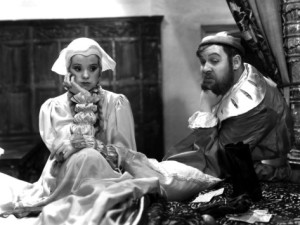

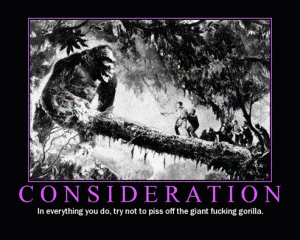
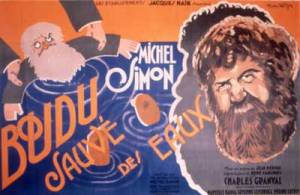
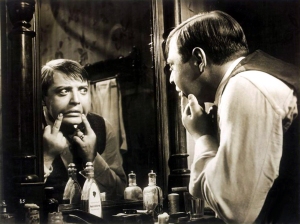
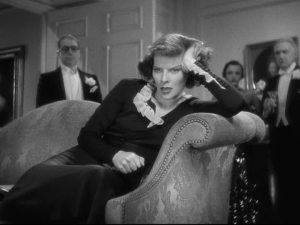
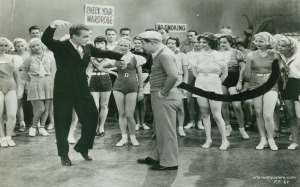
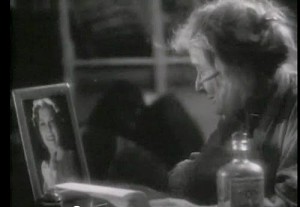
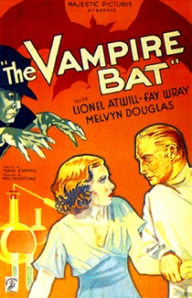
10 August, 2013 at 5:06 am
This is another tremendous post – thanks for a great read. Also, 1933 is the first year I really feel I’ve seen enough of the films to have some strong opinions of my own. I think it’s becaue of the three great Warner bros. Depression musicals and King Kong.
I love your words on King Kong. It’s been one of my favourite films since I was about seven years old – and I mean top five films. I adore it. And you’re so right about the craftsmanship and the effects and the music and the horror and the wonder. I just wonder if any of the performances came close to nominations for you. I think that Fay Wray and Robert Armstrong, in particular, are excellent in their roles – striking exactly the right tone for the type of film it is. I also really like Frank reicher as the captain. Only Bruce Cabot feels a bit weak to me – but not to the extent that it damages the movie.
Confession: I have yet to see M. I even have the DVD – just haven’t watched it yet. I must rectify that s.a.a.p. I have had a feeling for quite a while that I will like it – just keep reaching to watch other films instead. But your post has encouraged me to go for it.
Footlight Parade is probably my favourite of the big three WB musicals of 1933: partly because of the sublime Cagney, partly because of Joan Blondell (who I thought would be your Supporting Actress nominee until I saw it was Ruby Keeler, who is not as impressive to me but who at least gives her best performance here). But also, I do like the songs. Of the big three at the end, my favourite is ‘Honeymoon Hotel’ – I just think it’s really funny (even though not exactly PC). Though Cagney’s dance in ‘Shanghai Lil’ is a highlight.
Of all the Best Picture Oscar winners I have yet to see (about 15 of them), I fear that Cavalcade is the bottom of my list! Though I am a big fan of Frank Lloyd’s other Best Picture winner, Mutiny on the Bounty – a fun and stirring adventure film, if you ask me. Indeed, I like the Bounty story every time it is filmed – yes, even the 1962 version! But I digress.
Looking forward to the next post.
16 May, 2016 at 4:07 am
I rank ‘She Done Him Wrong’ higher than ‘M’, which is more of a chore to watch than any film can be before I call it ‘great’.
8 October, 2019 at 5:01 pm
No love at all for “Love Me Tonight?”
1 October, 2020 at 11:35 pm
I suspect that the AFI felt OK including ‘Wanda’ on their list because it was an MGM presentation, produced by American Michael Shamberg.
17 September, 2022 at 10:19 am
M is a magnificent achievement. I think you might have written about it as the best film made up to that time until the release of Grand Illusion and Citizen Kane somewhere; i agree wholeheartedly. I definitely think Lorre should be placed in supporting; yes, he is the movie i know, but he’s definitely absent for most of the movie up until his capture and the mock trial.
Paul Muni in my opinion gives the best lead acting performance of the year. It’s disappointing for me that he went from Scarface and this and then to giving Caricature like performances in The Life of Emile Zola, The Story of Louis Pasteur and Juarez.
I would have had King Kong at #1 if not for Chain Gang and M. It has aged incredibly well and the special effects,for the time that it was released, were excellent.
Watched Hard to Hardle, Footlight Parade and Picture Snatcher after reading about them here, and loved all three of them. Anybody who loves James Cagney should definitely watch these three films; their appreciation for him will increase tenfolds after witnessing such crackerjacker performances that he gives here. Also James Cagney and Joan Blondell might be the best screen couple ever, though most people will tout William Powell and Myrna Loy as the best.